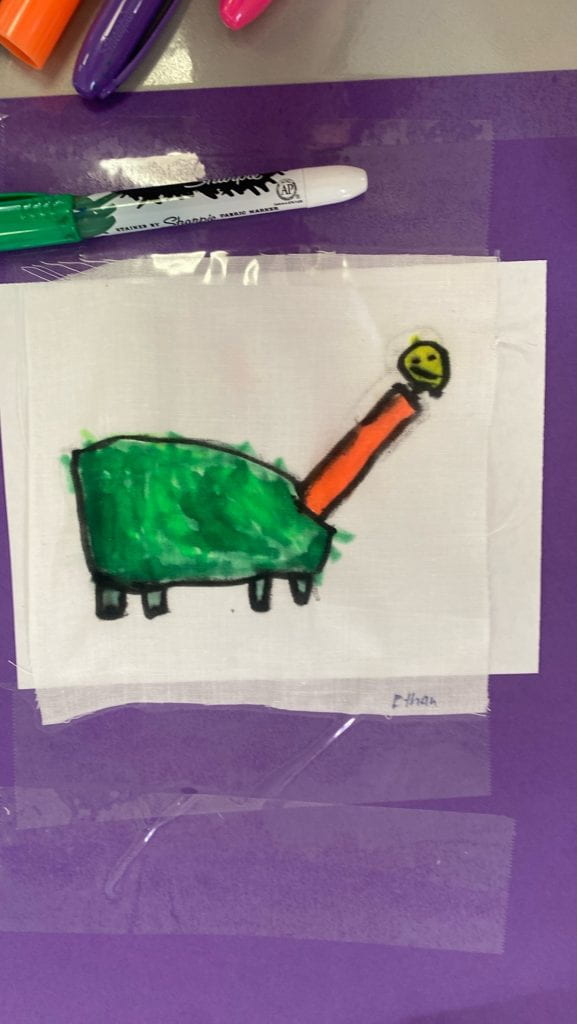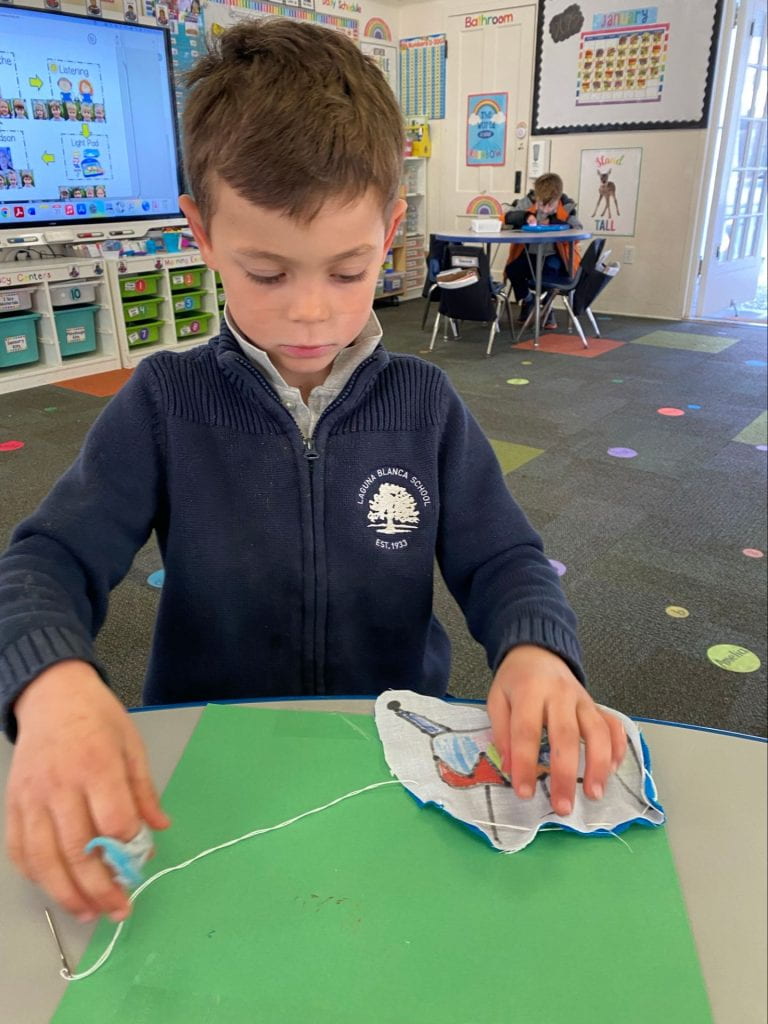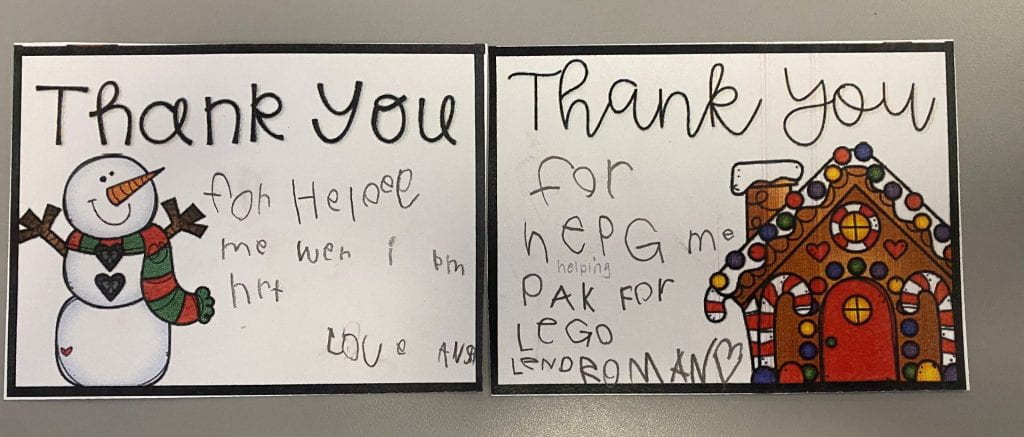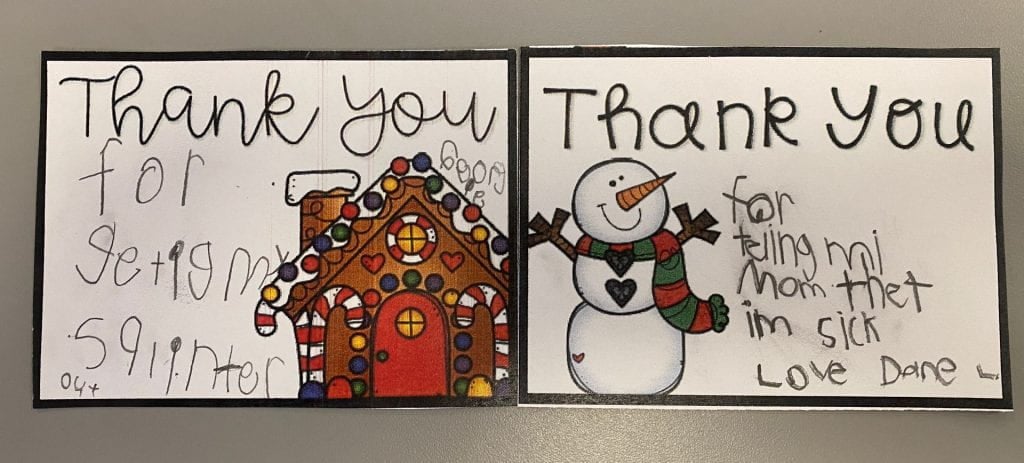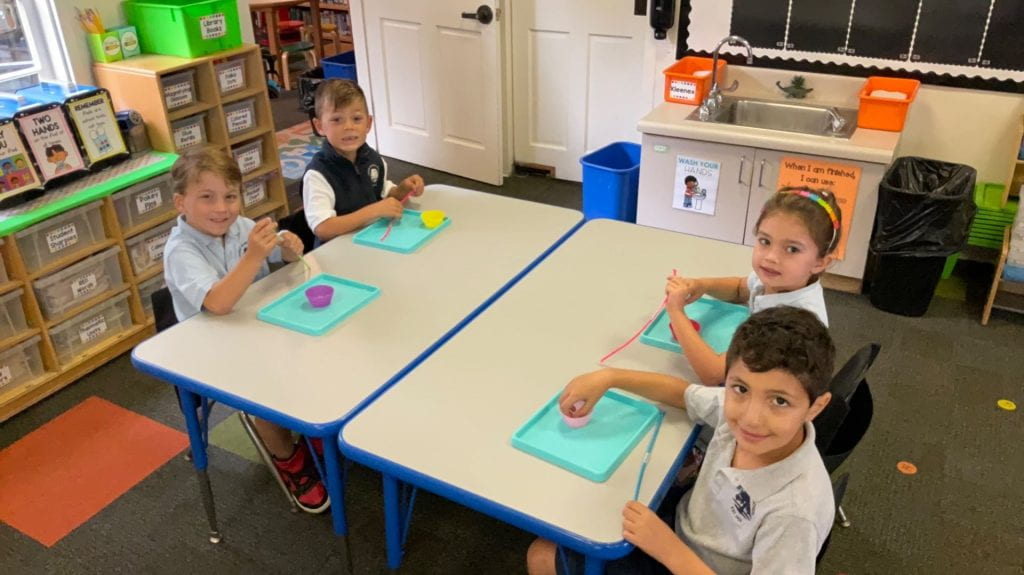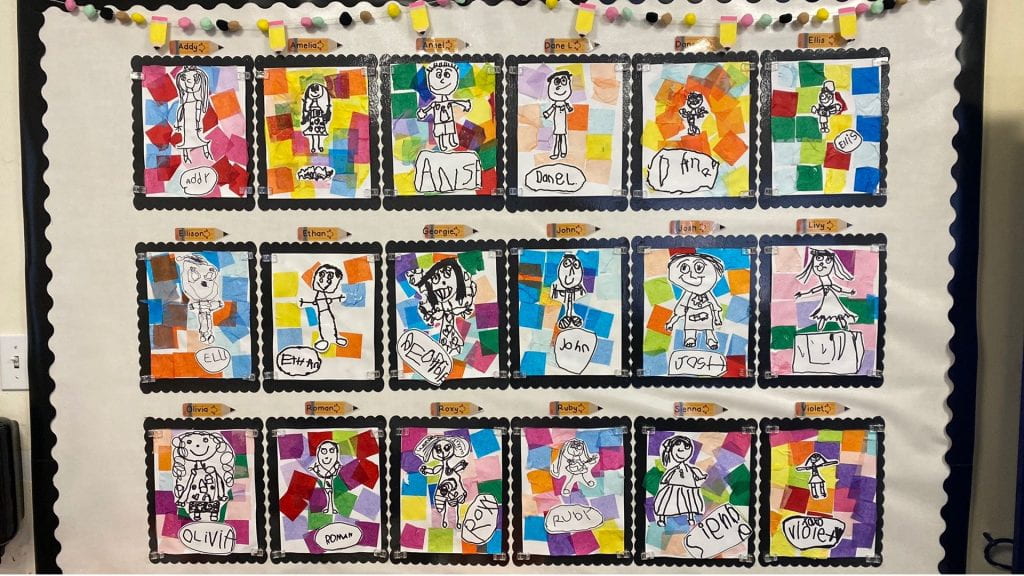We have an incredible new school counselor, Ms. Shankel! I told Ms. Shankel that I wanted to help foster new friendships in our class. We brainstormed some activities and New Friend Friday was born! First, we paired up returning students with new students. Next, Ms. Shankel came to kindergarten and shared with them an activity she had created where the new friend groups discovered each others’ superpowers. We set aside some time during lunch for the new friend groups to draw a picture together of their superpowers. Students were encouraged to talk to each other first to decide what they would draw, ensuring each friend was equally represented. The final challenge on that day was for the new friends to decide together what they would play during recess. Ms. Shankel and I modeled the process, showing the students how to compromise and take turns. The result was incredible! The returning students took their leadership roles seriously and eagerly followed the steps Ms. Shankel and I had outlined.


 We were most impressed with recess! The new friends really did play together! And they played new activities and games! It was so exciting to see! After lunch recess, we connected, and I shared with the students what I saw….friends taking turns deciding what to play, friends including others, and friends sharing laughs!
We were most impressed with recess! The new friends really did play together! And they played new activities and games! It was so exciting to see! After lunch recess, we connected, and I shared with the students what I saw….friends taking turns deciding what to play, friends including others, and friends sharing laughs!
Ms. Shankel and I decided to take New Friend Friday one step further. We agreed that Ms. Shankel would return to kindergarten and teach three mini SEL lessons dedicated to friendship and courage. What a success this has been! For Day 1, Ms. Shankel led the students to discuss courage and friendship. She had them role-play different scenarios to practice asking a new friend to play or compromise with their plan. She also shared a story about a child named Benny.
“Once upon a time, there was a kindergarten student named Benny. Benny loved recess and always played soccer with his best friends, Mia and Jason. They were so good at soccer; that was all they did every recess.
This school year, there was a new student named Alex. He usually spent recess sitting on the bench, watching the other kids play. Benny noticed Alex, but he wasn’t sure what to do. He liked playing with Mia and Jason and was a little nervous about change.
But then, Benny remembered something important. His teacher had talked about courage – the bravery to try something new – even when it feels a little scary. So Benny decided he would be courageous!
Benny took a deep breath and walked over to Alex one recess. He said, “Hi, I’m Benny! Do you want to play soccer with us?”
With a big smile, Alex said, “Yes!”
They all started playing together, and guess what?! Benny had so much fun! Afterward, Alex and Benny talked about things they had in common. Benny and Alex are going to have so much fun this year!!”
The students loved the story and eagerly shared what Benny learned. Each child shared a way that they could be courageous this week. Ms. Shankel and I immediately noticed a positive shift in the kindergarteners at recess. Those who had been observing recess asked friends to play a game! Those playing consistently with the same friends reached out to new friends and asked them to play! It was exciting to see the children practicing what they learned from the lessons!
On Day 2, students worked with their new friends to create a giant puzzle piece that depicted ways to be courageous in friendship. Again, students were asked to plan their projects with their new friends.


We completed the series today with time for the groups to share their puzzle pieces.



After each team shared their piece, they tried connecting it to add to the puzzle!
And we did it!!
A huge thank you to Ms. Shankel for her hard work creating these activities and the kindergarteners for being so courageous and trying something new!








